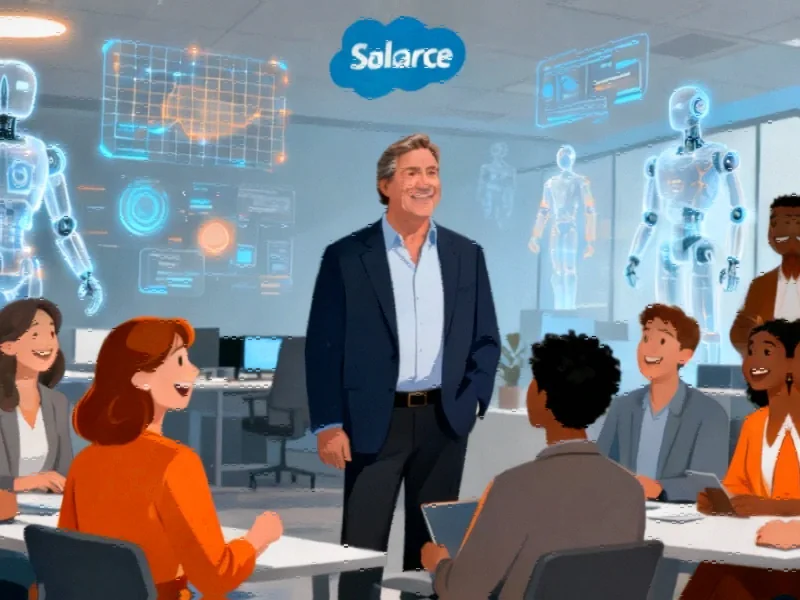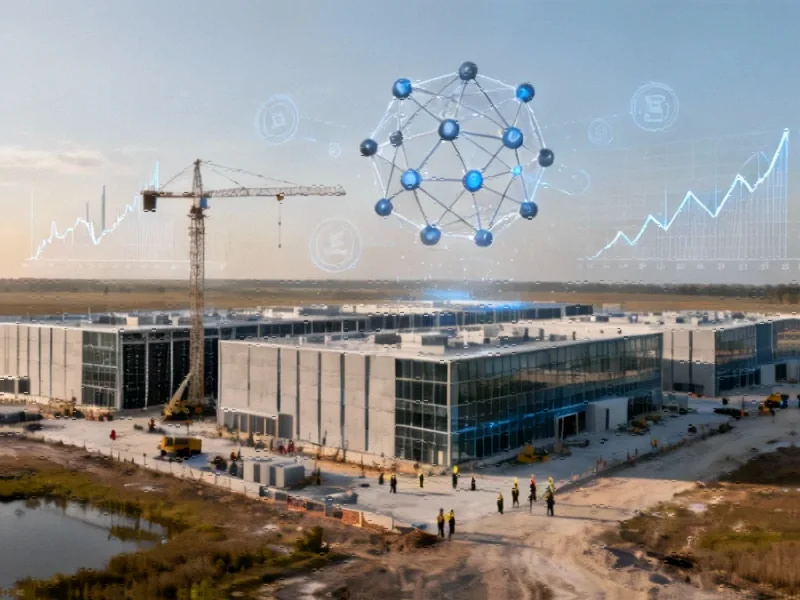Major Shareholders Challenge CoreWeave’s Core Scientific Takeover
The proposed $5 billion acquisition of Core Scientific by AI infrastructure giant CoreWeave is facing mounting investor opposition just weeks before a critical shareholder vote. Gullane Capital, Core Scientific’s third-largest shareholder with a $200 million stake, has joined other investors in rejecting the current terms, citing deteriorating deal economics and fundamental structural flaws.
Trip Miller, founder of Memphis-based Gullane Capital, stated unequivocally: “Under the math of the deal today, I would have to vote no.” His opposition follows similar concerns raised by Two Seas Capital, which owns approximately 6.3% of Core Scientific stock and has published a detailed presentation outlining numerous objections to the transaction.
Shifting Economics Undermine Deal Value
The acquisition, initially announced in July as a stock conversion deal valuing Core Scientific at approximately $9 billion with a 66% per share premium, has seen its attractiveness diminish significantly. CoreWeave’s declining stock price has reduced the per-share value for Core Scientific shareholders from the original $20.40 to approximately $17—representing a discount to Core Scientific’s current market price of around $19.
Miller emphasized the fundamental problem: “This is not a popular deal, I think for one simple reason: it’s a flawed structure. It would be a deal that would value my shares, actually, at a discount to what they currently trade for today.” This sentiment reflects broader market tremors signaling shifts in investor sentiment across technology sectors.
Strategic Imperatives Versus Shareholder Value
For CoreWeave, the acquisition represents a critical strategic move to control costs and secure infrastructure amid explosive growth. The company currently rents approximately 270 megawatts of data center space from Core Scientific, and owning the company would save an estimated $10 billion in lease payments over the next 12 years.
CoreWeave CEO Michael Intrator has mounted a vigorous defense of the transaction, calling it “the most compelling path forward for Core Scientific stockholders” and declaring the current terms CoreWeave’s “best and final” offer. In a response letter, Intrator characterized Two Seas Capital’s complaints as “misleading and misinformed” while emphasizing Core Scientific’s dependency on CoreWeave, which accounts for 76% of its revenue.
The controversy comes amid an AI investment surge fueling trillion-dollar wealth creation across the technology sector, though questions remain about sustainable business models.
Broader Industry Context and Financial Concerns
CoreWeave’s rapid, debt-fueled expansion has positioned it at the center of debates about whether AI infrastructure represents a historic opportunity or a speculative bubble. The company has announced major partnerships with industry leaders including OpenAI, Meta, Microsoft, and Nvidia, while aggressively expanding its data center capacity from 470 megawatts to over 900 megawatts by 2025.
However, financial metrics reveal underlying challenges. CoreWeave’s operating margins collapsed from 20% to 2% year-over-year, while debt ballooned to $11.2 billion—a 40% increase since the beginning of the year. The company faces borrowing costs ranging from 7% to 15% on various loans, raising questions about its financial sustainability.
Analyst Gil Luria offered a stark assessment: “They’re selling $20 bills for 15 bucks. Sometimes we forget to ask ourselves if this business should even exist. I’m not sure the answer is yes.” These financial pressures mirror broader economic developments affecting capital-intensive industries.
Strategic Implications and Industry Perspective
The acquisition would more than double CoreWeave’s operational megawattage and expand its pipeline of contracted future power by 50% to over 3 gigawatts. Raul Martynek, CEO of DataBank, noted that CoreWeave recognizes “how important this is to the long-term viability of their business model, owning the economics around their largest cost, which is data centers.”
Yet shareholders remain skeptical about the current terms. Two Seas Capital argued that the deal fails to provide adequate protection against stock fluctuations and represents a “take-under of Core Scientific” given the company’s intrinsic value and strategic importance to CoreWeave.
Miller offered an alternative vision, suggesting that in the current hot data center market, Core Scientific could reach $30 to $40 per share within 18 months as a standalone company or attract more lucrative acquisition offers. This perspective aligns with broader industry developments where infrastructure assets are becoming increasingly valuable.
Looking Ahead: October 30 Shareholder Vote
With the shareholder vote scheduled for October 30, the outcome remains uncertain. CoreWeave’s aggressive expansion continues amid what Intrator describes as customer demand requiring infrastructure development on a “planetary” scale, while the company’s revenue backlog has doubled to $30.1 billion since the beginning of the year.
The resolution of this acquisition battle will have significant implications for industry leadership transitions and the broader competitive landscape. As companies race to capitalize on emerging technology platforms, the balance between growth ambitions and shareholder returns remains precarious.
The final decision will test whether CoreWeave’s vision of vertical integration and cost control can overcome shareholder concerns about valuation and deal structure in one of the year’s most significant data center transactions.
This article aggregates information from publicly available sources. All trademarks and copyrights belong to their respective owners.
Note: Featured image is for illustrative purposes only and does not represent any specific product, service, or entity mentioned in this article.



